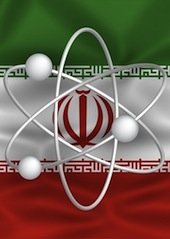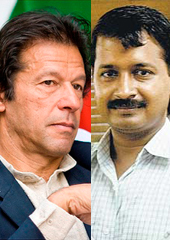Iran, Syria and Blurry Red Lines
Are the “red lines” set by the United States for weapons of mass destruction a lot less sharp in a post-Iraq Middle East?
May 23, 2013

The Obama administration has said that it still lacks “airtight” evidence that Syrian president Bashar al-Assad’s regime crossed a U.S.-declared “red line” by using chemical weapons.
President Obama said that the proven use of these weapons would be a “game changer,” but the administration has cautiously fended off calls for an immediate U.S. intervention.
They are instead pressing for a United Nations investigation to evaluate the evidence and establish the facts.
“Red line” sounds so well-defined, so resolute. But the Syrian case demonstrates the challenge of holding that line when elusive or ambiguous proof makes it appear wavy.
Beyond its immediate consequences for Syria’s bloody civil war, the Assad regime’s alleged use of chemical weapons has important implications for another urgent case facing the Obama administration — Iran.
There too President Obama has laid down a red line by declaring that U.S. policy is to prevent Iran from obtaining a nuclear weapon.
But the uncertainty about the Assad regime’s actual use of chemical weapons as a trigger for U.S. action pales in comparison to the inherent uncertainty surrounding Iran’s opaque nuclear program.
Indeed, the challenge of determining whether Iran has crossed the “red line” of weaponization is compounded by the Tehran regime’s strategy to cultivate ambiguity about its nuclear capabilities and intentions.
Iran’s nuclear efforts are incremental and determined, but with origins dating to the Shah’s era, they do not add up to a crash program to get the bomb.
Iran’s mastery of the nuclear fuel cycle creates an inherent hedge: centrifuges that spin to create low-enriched uranium for ostensibly civilian purposes permissible under the Nuclear Non-Proliferation Treaty (NPT) can keep spinning to yield highly-enriched uranium for weapons.
For this reason, countries that have reached this technological point have been called “virtual” nuclear weapons states.
U.S. intelligence analysts maintain that Iran has not yet decided to cross the threshold from potential capability to an actual weapon.
This condition may persist because Iran faces no existential threat that would create an imperative to weaponize. Indeed, the strategic ambiguity of going so far but no further, at least not yet, might well serve Iranian interests.
This assessment was captured in former Iranian president Hashemi Rafsanjani’s subtle formulation, “As long as we can enrich uranium and master the [nuclear] fuel cycle, we don’t need anything else.”
A hedge, then, is Iran’s strategic sweet spot. It leaves the door open to weaponization, while preserving the Tehran regime’s fig leaf of deniability about its nuclear intentions.
On the U.S. side, by drawing the “red line” at preventing weaponization, President Obama has signaled that the United States is not going to undertake preventive military action to deny Iran any nuclear hedge option.
Iran is progressing along the technological continuum toward weaponization but is unlikely to make a dramatic major move, such as conducting a nuclear test or withdrawing from the NPT, which would openly cross the red line of weaponization.
So long as Iranian progress falls short of overt weaponization, it would be hard for the Obama administration to sustain the case for military action at home or abroad.
After Iraq, when flawed intelligence on Saddam’s WMD programs was central to the Bush administration’s case for preventive war, the United States would simply not get the benefit of the doubt.
And doubt there would be in the absence of hard evidence of weaponization in Iran.
That the U.S. “red line” on weaponization pushes off a decision on the use of force is also a reflection, as in Syria, of how unattractive that option would be.
A military strike on Iran’s nuclear infrastructure would set back but not end the program. It would also likely escalate into a broader conflict and could well have disastrous environmental consequences through the release of radioactive toxins into the atmosphere.
And a U.S. strike could well have the perverse effect of bolstering Tehran’s besieged clerical regime domestically by inciting Iranians to rally-round-the-flag after an attack.
The gap between Iran’s pursuit of a hedge and the U.S. red line pegged to the technological achievement of weaponization creates space for coercive diplomacy.
The U.S. objective should be to marshal international support to hedge the hedge: in short, to keep Iran as far as possible from making that final turn of the screwdriver to weaponization.
Such coercive pressure — notably punitive sanctions — could compel the Iranian regime to set bounds to a nuclear program for which weaponization is not an urgent necessity.
Takeaways
Uncertainty about Syrian chemical weapons use pales in comparison to uncertainty on Iran's nuclear program.
That the U.S. "red line" pushes off a decision on Iran reflects how unattractive the force option would be.
A U.S. strike could well bolster Tehran's besieged clerical regime domestically.

